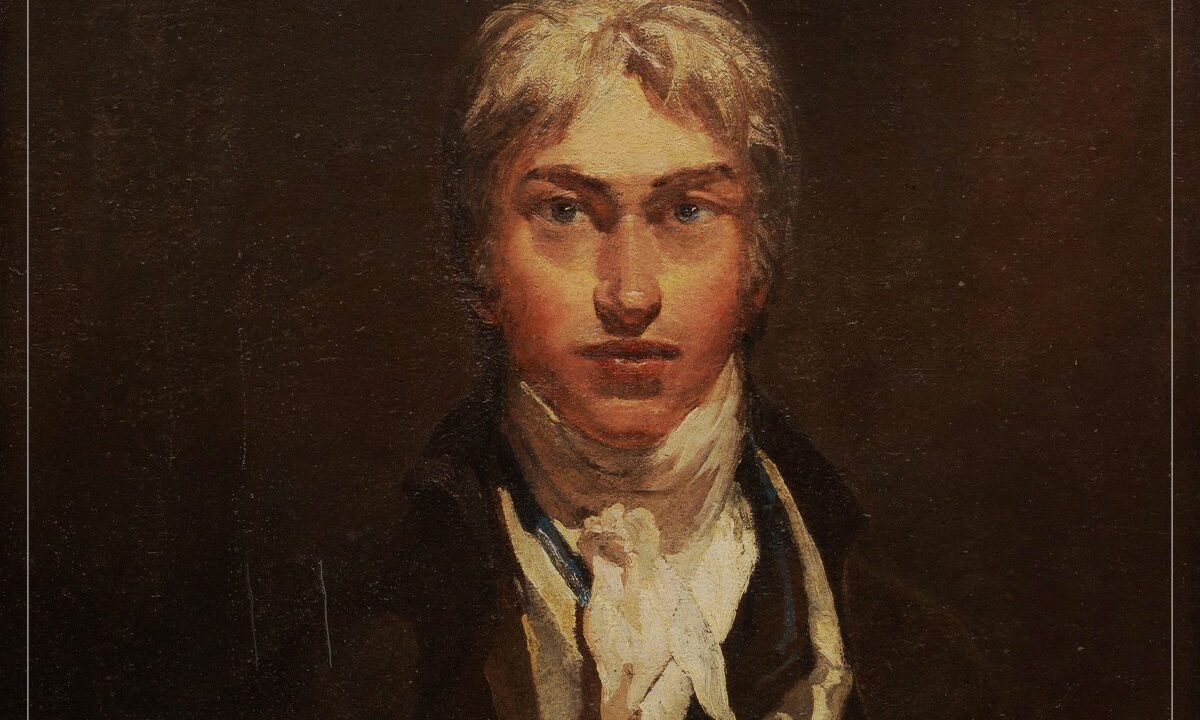

(Credits: Far Out / Tate Britain)
Initially, it is difficult to decipher what’s going on in this fairly small painting. We are confronted by a melange of shades: ochres, terracotta, dirty creams and browns. The colour palette is mostly monochromatic in terms of the apparent proximity of the colours used, but that doesn’t make it any less clear. The swirling and mixing of these colours across the canvas makes it difficult to mark the differences between sea and sky as they fuse into one.
What’s clear, however, is that the movement of the ocean, the swell concentrated on the left side of the canvas, is evident in the darkness of the rising waves. The diagonal, upwards brush strokes could be indicating sprays of water, or a tornado, or clouds—again, it’s difficult to tell. This is a snapshot of the waves just before they are to crash into the right side of the painting.
Another unmistakable element is the skeletal structure of a bright red ship in the sea, puncturing the sky. It is the only solid form in the entire painting and is easy to spot. Its solid lines are the only visual clues that this is a ship caught in a storm at sea, soon to face its tragic ending. This is clear by the way it tips to the side.
The cacophony of colours forming a frothy and confusing scene creates a sense of befuddlement that almost makes one seasick. Turner forces the viewer into the position of having to unpack everything they see and feel. This is quite perplexing for late 18th-century art, which still placed much emphasis on perspective and formal structure. So, their lack really adds to the modernity of Turner’s style.
As you keep searching for clues, more horror reveals itself. In the water are flecks of bright red blood, and if you look even closer, little hands can be seen jutting out of the surface of the water, grasping at air and reaching up at the sky. We are led to believe that these belong to people, but whether they are still alive remains unanswered. Either way, they are reaching their end, evident in the seagulls pecking at them as they drown.
The most harrowing of all is the singular leg shooting out of the sea. It is easier to identify thanks to the chain around its ankle, indicating that it belongs to a slave. The lack of a face, or any other anatomical body part, makes the leg ambiguous, which fully embodies the experience of slavery at the time. Turner makes an impressive effort to give us a sense of how slaves were treated as a number or property, where care for the identity of a slave was outright discarded.
This already horrific scene is augmented by the surrounding fish that swarm the leg, ready to devour it. In the distance loom two larger fishes, perhaps sharks, approaching with their mouths wide open.
This painting is titled The Slave Ship, or as it was originally called, Slavers Throwing Overboard the Dead and Dying—Typhoon Coming On by JW Turner. This title reveals the harrowing story of what we see before us, slapping us in the face with the reality of the subject matter, which is just as powerful today. What we had to slowly piece together is now abundantly clear from the elaborate title.
If it wasn’t apparent, Turner was an abolitionist, and although he is known for his ethereal romantic landscapes, many of them are laced with critical and often heavy historical critique. In 1781, the captain of the Zong, a British slave ship, ordered his crew to throw overboard around a hundred slaves because there was not enough water for them. The ship was already carrying over four times its original capacity, and despite the slaves begging to let them die of thirst onboard, as always, their pleas went unheard.
The painting was executed in 1840, just seven years after England had abolished slavery. However, the movement to which Turner pledged allegiance was far from over—slavery was still rife in the British colonies and across the world.
Overall, Turner used his painting to depict a shocking account, a testament to and glaring piece of evidence of the horrors of slavery that he was actively trying to protest and abolish. He places us as the judges, forcing us to take on the guilt as a call to action. Unlike earlier historical paintings of bloody massacres with mangled bodies and tortured screaming faces, the power of this painting lies in the subtlety and absence of all that. It’s the simplicity of the subject matter that is precisely made evident in the quiet horror of the scene, which makes its message even more explicit and urgent.
Related Topics











